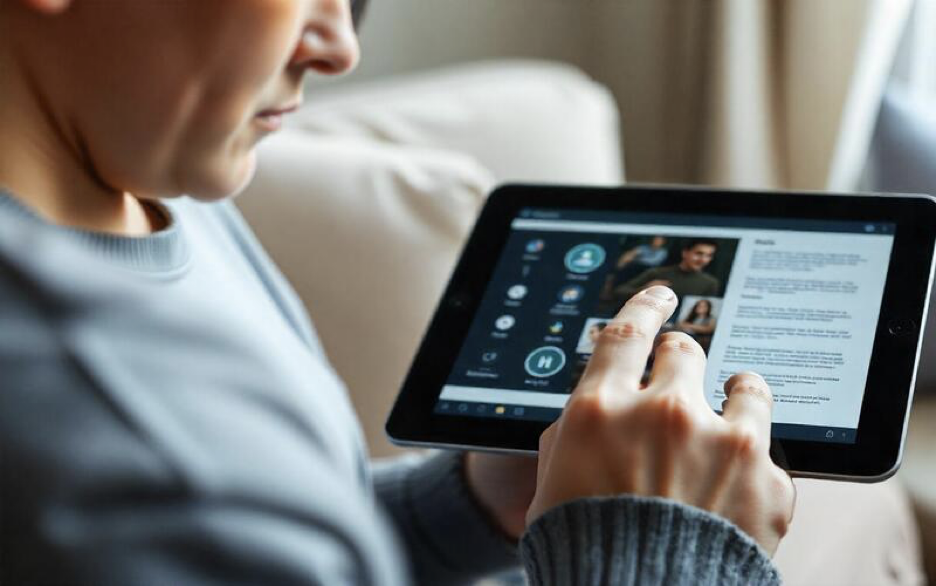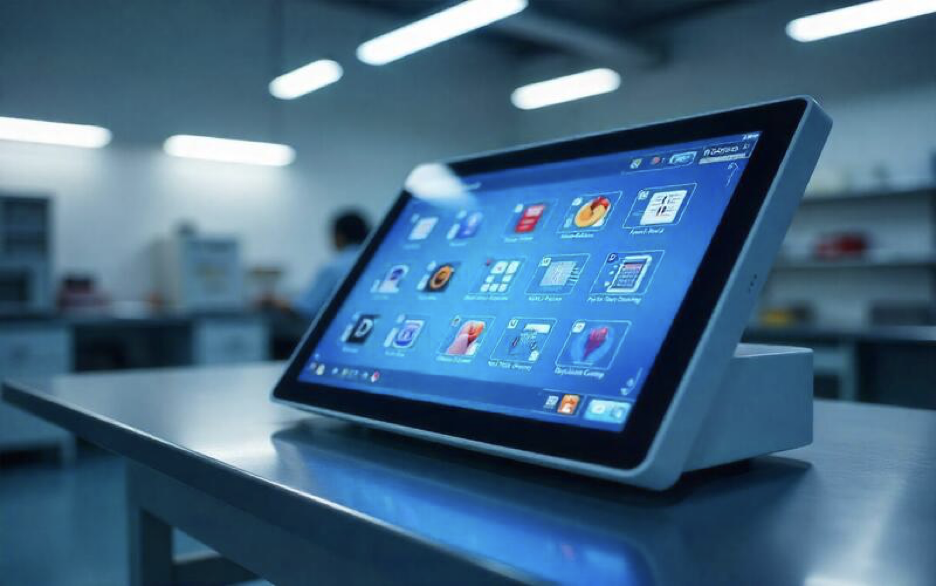The present world is the world of various touchscreen devices. Touchscreen display appliances are an integral part of our house to the office. The functionality and precision of a touchscreen are essential for better touch response and user experience.

Therefore, the need for a multi touch tester arises. Touch screen manufacturers test the responsiveness and accuracy of their touches using the touch tester equipment. It allows them to provide high-performance, user-friendly touch screens for various devices.
However, this article will teach you about the multitouch tester, the technology behind it, its applications, and its advantages.
Let’s get started.
Article Directory:
- What is a Multi-Touch Tester?
- How Does a Multi-Touch Tester Work?
- Types of Multi-Touch Tester
- Multi-Touch Tester Features
- Multi-Touch Tester Functionality
- Different Applications of Multi-Touch Tester
- How to Select the Right Multi-Touch Tester?
- FAQs
- Bottom Line
Multi-Touch Tester: A multi touch tester is an automated machine that tests how many touches a screen can identify, process, and interact with accurately. It can test the screen quality and calibration of capacitive displays, resistive displays, microLED displays, and other touch-enabled devices like smartphones and tablets.
The multi-touch tester has several key features such as multi-touchpoint detection, touch pressure measurement, gesture recognition testing, and durability testing.
It can simulate human touch, perform precise measurements and analyses, evaluate performance, and identify issues with the touchscreen. Overall, it replicates human touch behavior to assess the performance and reliability of a touchscreen.

How Does a Multi-Touch Tester Work?
The multi-touch tester is designed to test the functionality and performance of a touchscreen. Specifically, for those screens capable of recognizing multiple simultaneous touch inputs.
Some testers use robotic arms with precise actuators to reproduce the touch like human fingers. These fingers can identify and perform different gestures and tasks such as tapping, pinching, and zooming. It is used to perform relatively complex touch testing.
Some other testers use manually controlled styluses and probes to simulate touch input. This process is suitable to taste smaller devices in any specific area of a screen.
Types of Multi Touch Testers:
There are two types of multi touch testers, i.e., manual and automated.
- Manual multi-touch testers need human input to accomplish testing. It is used for the quick test.
- Automated multi-touch testers equipped with robotic arms or sensors. They can execute detailed testing tasks repeatedly without human input.
Multi-Touch Tester Features:
Multi-touch testers can perform a series of testing tasks to justify touchscreen performance and quality. The key functions of a multi-touch tester are:
- Multi-touch Point Detection: The primary feature of a multi-touch tester is simulating the multiple fingers touching the screen simultaneously. It finds how effectively the device registers and differentiates these touches.
- Touch Pressure Measurement: Multi-touch tester measures the pressure applied to the screen during a touch to identify the touch response and sensitivity.
- Gesture Recognition Testing: The multi touch tester can recognize gestures like swiping, pinching, and zooming. It then justifies the device’s ability to detect, interpret, and respond to those gestures.
- Touch Durability Testing: Touch durability testing measures how well a device’s touchscreen can endure multiple simultaneous touch points over time.
Multi-Touch Tester Functionality:
The multi-touch tester can take several actions. The following are major functionality of a multi touch tester.
Human Touch Simulations: A multi-touch tester simulates human touch and interactions through the use of robotic components or other mechanisms. Thus it assesses how effectively a device’s touch can sense, recognize, and differentiate multiple touches at a time.
Precise Measurement and Analysis: The multi-touch tester accurately measures touch performance parameters and analyzes touchpoints, pressure levels, and gesture inputs. Pressure measurement ensures proper response sensitivity.
Performance Evaluation: Performance evaluation is the main function of a multi-touch tester. It analyzes the responsiveness, accuracy, and overall performance of touch screens.
Issues Identification: The multi-touch tester detects flaws, inconsistencies, and errors in touchscreens, facilitating necessary corrective actions.

Different Applications of Multi-Touch Tester:
Multi-touch tester has versatile applications in different industries such as:
Smartphone and tablet manufacturing: Touchscreen responsiveness is crucial for mobile devices. Multi-touch testers examine the touch quality of these devices to ensure flawless user experiences.
Automotive Industry: Modern automobile manufacturers incorporate touchscreens into their navigation systems and infotainment features. Multi-touch testers test those screens to guarantee accurate gesture recognition and operation.
Kiosk Development Industry: Touch responsiveness is important for kiosks. Their performance depends on their touch quality. The multi touch tester tests the touch performance of retail, electronic, information, wayfinding, and video kiosks to make them perfect.
Gaming Console and VR Device Development: Gaming and VR devices require high-performance touch screens. Multi-touch tester helps manufacturers enhance the touch interaction of gaming consoles and VR devices.

Advantage of Multi-Touch Testers: Multi-touch testers have numerous benefits in the device development and production processes.
Enhanced User Experience: Multi-touch sensors address different issues associated with touches to improve the user experience. It assists the manufacturer in delivering a user-friendly, smooth, and responsive touch experience.
Guarantee Product Excellence: Multi-touch testers detect touch-related issues during production, ensuring high-quality touchscreen products and maximizing customer satisfaction.
Development Cost Production: Multi-touch tester can reduce production costs by identifying problems. It allows developers to address the problem associated with the touch screen and minimizes the cost of rework and delays.
Ensure Streamline Production: The tester evaluates the touch screens during development and ensures efficient production in the manufacturing lines. It increases the overall capacity of the production team.

How to Select the Right Tester?
Choosing the proper tester is essential for the error-free testing result. Consider the following testing factors to select the best tester for you.
Device Screen Size and Type: The first thing you need to consider during multi touch tester selection is the type and size of your screen. If you can select the appropriate tester for each screen type, it will provide the most accurate test results.
Tester’s Testing Capabilities: Choose the tester capable of testing your device needs. Ensure it can perform multi-touchpoint detection, pressure measurement, and gesture recognition.
Consider Your Budget: Multi-touch tester equipment is available in different price ranges. Learn about the necessary features and try to select the tester that fulfills your test criteria. Do not purchase any high-end tester that exceeds your needs; it will help minimize costs.
FAQs
What does multi-touch mean?
Multi-touch refers to a touchscreen’s capability to detect and respond to several points of contact together. It allows you to interact with your touchscreen device with more than one finger or object at a time. It also recognizes gestures like pinching, swiping, or rotating.
For example: The zooming in and out feature on a smartphone using two fingers.
What is multi-touch vs single-touch?
Multi-touch and single-touch refer to a touchscreen’s ability to interact with one or more points together.
Single-Touch:
- Definition: The touchscreen or touch-sensitive surface that can recognize, process, and handle only one point of contact at a time.
- Functionality: You can perform basic tasks with the single-touch device like tapping, sweeping, and dragging. It cannot respond to gestures involving multiple fingers.
- Applications: Single touch screens are used in primary touchscreen devices, basic ATMs, early smartphones, and industrial machines.
- Limitations: Single touch screen cannot interact with advanced gestures like pinch-to-zoom or multi-finger swipes.
Multi-Touch:
- Definition: Touch screens that can recognize, process, and respond to multiple touch contacts at a time are known as multi-touch.
- Functionality: It can simultaneously identify, process, and respond to complex gestures like zooming, pinching, rotating, and multi-finger swipes.
- Application: Your smartphones, tablets, laptops, gaming systems, and interactive displays are multi-touch screens.
- Benefits: It can perform multiple functions concurrently.
What is 5 point multi-touch?
A five-point touch screen is a type of multi touch screen that can detect and interact with up to five touch contacts at the same time.
You can use a maximum of five fingers in those multi-touch screens to perform image rotation and zooming.
What is the difference between touch screen and LCD?
A touch screen is a thin plastic layer in a display that can read touch signals and send them to the processing unit. You can work with a touch screen using your fingers, gloves, and a stylus pen.
LCD(Liquid Crystal Display) is a panel that represents the visual information. It uses backlight, liquid crystals, and color filters to process visual data.
Bottom Line:
Present premium touchscreen device manufacturing has become possible by properly analyzing their capabilities and responses. The multi touch tester has made the tasks easy for touch screen research and development personnel.
Developers can evaluate their touch screens’ performance and flaws during development using the touch tester.
However, if you have any further questions on the equipment, comment below at any time. Our experts are kind to answer your queries.
